Schinziophyton rautanenii (Manketti,
Mongongo) mongongo [Herero, !Kung San]; Manketti,
Mongongo [Afrikaans]
Life
> eukaryotes >
Archaeoplastida >
Chloroplastida
>
Charophyta > Streptophytina > Plantae (land plants)
> Tracheophyta (vascular plants) > Euphyllophyta > Lignophyta (woody plants)
> Spermatophyta (seed plants) > Angiospermae (flowering
plants) > Eudicotyledons > Core Eudicots > Rosids >
Eurosid I > Order: Malpighiales > Family: Euphorbiaceae
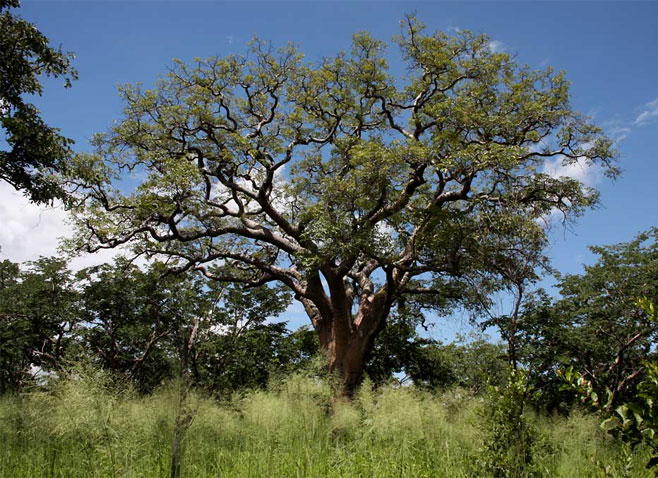 |
|
Schinziophyton rautanenii, by road from
Hwange Nature Reserve to main Vic Falls / Bulawayo Rd, Matetsi Safari
Area, Zimbabwe. [photo Bart Wursten ©, Flora of Zimbabwe] |
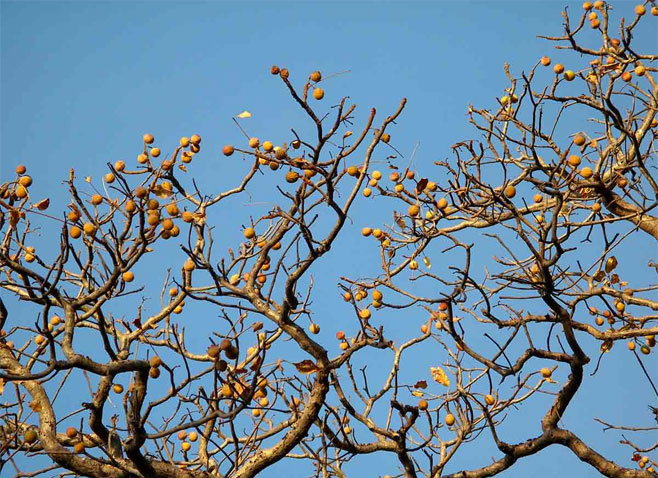 |
|
Schinziophyton rautanenii, dirt road to
Bovu Island about 2 km from main road, Zambia. [photo Bart Wursten ©, Flora of Zimbabwe] |
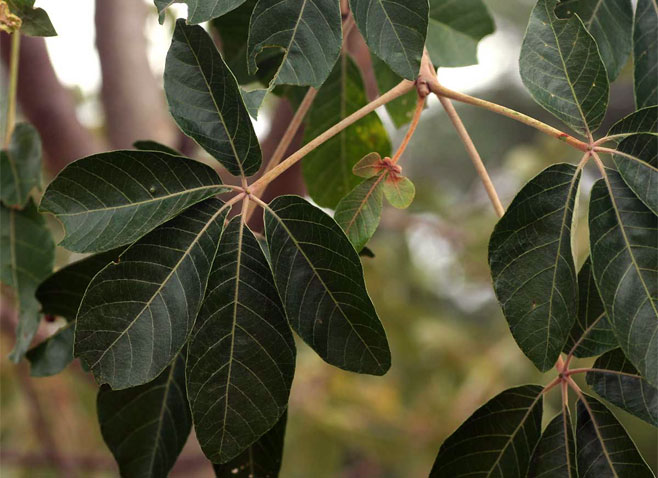 |
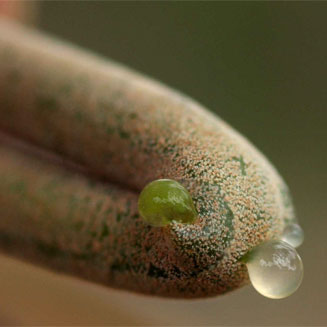 |
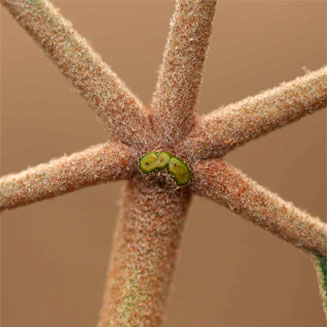 |
|
Schinziophyton rautanenii, near 'Save the
Nation Store' by the main Bulawayo - Vic Falls Road, Zimbabwe. [photo
Bart Wursten ©, Flora of Zimbabwe] |
Native to N Botswana, N Namibia, SE Angola, W
Zimbabwe, N Mozambique and marginally into South Africa, along the Botswana
border. Has egg-shaped velvety fruit consisting of a thin fleshy layer around a
thick, hard shell containing a nut. Both fruit and nut are edible and nutritious
and have the advantage of being available for most of the year.
Uses
- The pulp of the fruit is eaten. Preparation involves
first steaming the dried-out fruit to soften the skin and remove it. The
pealed fruit is cooked in water until the maroon-coloured flesh separates
from the nut. The flesh is then eaten.
- Nuts derived from fruit production are roasted,
cracked open, and eaten.
- Shelled nuts are also pounded up and used in various
dishes.
- Oil from the nuts is used as a body rub to clean and
moisten the skin, especially in the dry winter months.
Links
Publications
-
van Wyk, B.-E. & Gericke, N. 2000. People's
Plants. A Guide to Useful Plants of Southern Africa. Briza Publications,
Pretoria.
|
